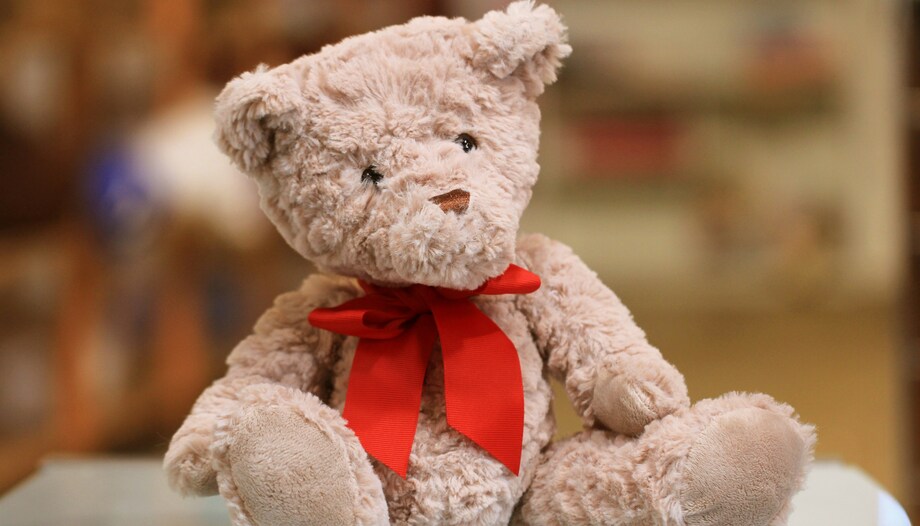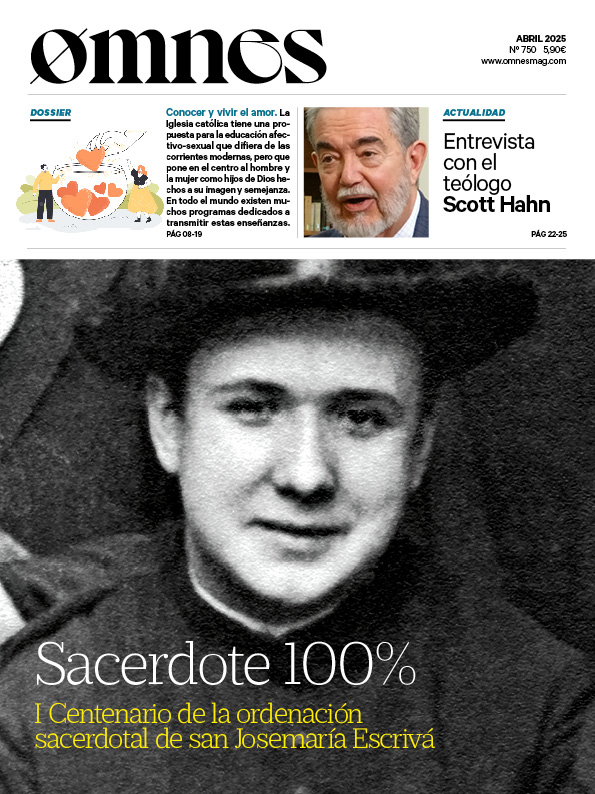Grandma, who was a very tidy woman, had kept all the toys in an adjoining room in the garage with a red curtain. One day, one of the many days I went to visit her with the children, she opened some boxes full of dusty toys, like someone revealing a well-kept secret. Even though more than forty years had passed, those toys were inside the cardboard box, untouched, waiting for a child to make up stories with them again. All you had to do was blow hard for the dust to come off and the magic to begin.
Many of these toys were old, obsolete and outdated, but they were a demonstration of the value of play that she had instilled in her children. Children, as we know, love not the one who gives them toys but the one who plays with them.
Who, if they find a stuffed animal forgotten on a park bench or on the sidewalk, does not feel sorry for the child who is feeling its loss at that very moment? And who, if they can, does not put a sign on a lamppost with a picture of the stuffed animal so that the owner will get that beloved one back?
Childhood memories
The stuffed animals in the childhood are a tangible form of love and affection, medicine for the soul. They are a constant reminder of special people in our lives. Feeling affection makes us feel good and it manifests itself in gestures, hugs or words. When you feel affection you don't feel judged, nor do you have to pretend or pretend. The cuddly toy understands the child, it does not judge him (that is what the child perceives), on the contrary its look is sweet. After all, that is what we want as children, affection. God gives us affection ("The Lord is affectionate to all his creatures", says the psalm).
I have one memory from my childhood, a very small room where there was little light and a stuffed animal in the shape of a giraffe that was taller than me. My grandmother's brother had a toy store and, once I was there, he gave it to me as a gift. That spontaneous and sincere gift is a thread that forms the warp of my heart.
I have not been given many other stuffed animals -that I remember with that intensity- except for a cloth elephant my mother made for me, which had a black button for an eye. That blue and white striped elephant still sits on a chair in my room in my parents' house in the village. I went back to my childhood again, as an adult, buying stuffed animals again or receiving them as gifts for my children. Having children was a vital energy charge for me. I have given birth three times, all outside my country and quite alone, but that would be the subject of another article.
The first time I went out for a drink with my husband after giving birth in Singapore, I came home with a brown stuffed rabbit with a green bow. The idea was to go out and have a change of scenery (what is now tardeo) but in my head and heart was the baby and I ended up in a toy store where I bought it. We still have him, it's been almost eighteen years. I can't give that rabbit to anyone.
Children grow up and so do we
I am reluctant to give or abandon my children's stuffed animals because, around the age of forty-five, I was fully immersed in three childhoods, those of my children. And responsible as I am, I made sure they had a very happy one. To have a beneficial influence on children, you have to share in their joys. Now, coming out of that stage, I realize that I was the one who wanted to recover my childhood. Those stuffed animals are mine, and maybe, as an old lady, without much memory, I can look at them as a new object that will bring me joy. And I could play again.
In my house, each stuffed animal has its name and they are comforting companions, and have been facilitators of emotional development as well as stimulating their creativity and with them we have created a very special bond.
The children are getting older, but the stuffed animals are still there and so is the bond. I think, for example, that Michele will take Kiko with her when she becomes independent. How could I forget or give someone the stuffed duck, whose leg fell off, and a friend of mine fixed it with needle and thread, sewed up the hole, but didn't add a new limb, so that duck is sympathetically missing a leg. Or that other light brown bunny that my mother sewed on the leg that had broken off but inadvertently sewed it on backwards. That's the rabbit with the upside down leg.
I can't fail to mention the white seal and the white and cinnamon dog that a friend gave me for my children, or a beautiful deer, who looks at you with sparkling eyes. In all, no more than eight stuffed animals live in our house, and I can tell the story of each one of them (who gave it to us, and at what time and why) and, as I am sure they have a life of their own at night, they know us, because they watch us attentively and want nothing more than to be caressed and touched.
The children we were
We get attached to these fabric beings because they are our childhood, they are us becoming children again. To get rid of them would be like getting rid of something that is ourselves, and that is hard. The child we were travels with us, and although it is good that the world expels us from childhood, that is not an obstacle to preserve values that we possess in childhood: purity, the capacity to be amazed, curiosity, imagination or the pure way of looking.
As my children get older, my choice is not to store them but to give them to other children. Just yesterday I gave two bicycles in good condition, a shoebox full of strollers and a car driven by a doll. However, with teddy bears an invisible hand stops me, they are part of me, and they have something of me that I am reluctant to give, they have a special symbolism, as they represent the tenderness and affection that the person who gives them feels for the other. Soft and pleasant to the touch, they transmit a feeling of comfort and security. I wash them frequently, because I want them to smell good.
Children become attached to blankets and stuffed animals because they give them a sense of security, well-being and inner comfort. From a psychological point of view, stuffed animals are transactional objects for children, we use them to express things we would not say otherwise, we rehearse with them for life. They use them to learn to relate to the world. A very special bond is created with the stuffed animal, it is called affection. Over time that feeling turns into nostalgia for a happy time that has passed.
Growing and healing
Nurses often use stuffed animals as a health care strategy for hospitalized children, especially to prepare those about to undergo surgery or other painful or unpleasant procedures. Teddy bears motivate children to get better. A child in the hospital who is able to play heralds successful treatment or a return to health. When children play, they can overcome their feelings of being in the hospital, which helps reduce the intensity of negative feelings about their experiences. This allows healthcare workers to cultivate the positive state of mind that young patients need to heal.
Children need nurturing to grow, but it is love that they need the most. When a stuffed animal that has helped you through a tough illness, you can hardly ever get rid of it. And I like to think that neither can the stuffed animal get rid of you.
"At no time is it good to be expelled from childhood and the death of my mother was my expulsion, the first loss of a great love. How many do you have in life? Two? Three? Well, I've already lost one. Milena Tusquets' raw description of loss, of the slaps that life can give you. Childhood, if it has been beautiful, remains as that safe place where we would also like to settle when we grow up. That being very happy without really realizing that you are, without giving it any importance. It is the time when having a stuffed animal gives you encouragement and helps you grow up. There comes a day when you look at that stuffed animal and it no longer speaks to you, not because it has lost its voice but because you have changed.
Refusal to grow
Sometimes we see a dirty, old, untidy stuffed animal in the hands of a child. In such cases there is perhaps too close a relationship. The child cannot be separated from the stuffed animal because he sees in it everything he has not received. Aloysius was the stuffed toy of Sebastian Flyte, a character in the novel "The Child".Return to Brideshead"by Evelyn Waugh in 1945. An English novel that, when I read it, I was in my twenties and it had a great impact on me. Of all the characters that appear in the novel, it is Sebastian Flyte that captivated me the most. A big brown bear that he can't let go, that strange attachment represents a refusal to grow up. A growing up where Sebastian glimpses all of his shortcomings in dealing with life that he is unable to face. He was a young man who opened himself to life and felt a lot of control and hypocrisy around him.
Sebastian moves in an aristocratic environment, full of material wealth but lacking empathy and love. The bear represents his childhood, that paradise where he has been unaware of the evil that surrounded him. And he discovers a friend, he feels something authentic with Charles. He invites his friend to dinner because his teddy bear refuses to talk to him until he has been forgiven. His friend with these phrases reads in his soul what the teddy bear represents to him.
The nice thing is to grow up, take responsibility and keep childhood in your heart, knowing that this stage has passed. From that place, you look at the teddy bear with affection and nostalgia, which is a positive feeling that helps to strengthen the sense of identity, and more inspired. A friend of a certain age sent me the other day a picture of a rubber doll his mother used to use. I thought to myself... this guy is not stupid, if it helps him to keep that object it will be because nostalgia helps him to live.









